Introduction
Released in September 2014, the new $797 Nikon 20mm f/1.8G ED is an FX mount wide-angle prime for such Nikon full-frame DSLRs such as the Nikon D750. Updated from its predecessor, the Nikon 20mm f/2.8D, the f/1.8G version boasts a wider maximum aperture and a new optical arrangement, including two Extra Low-Dispersion (ED) elements and two Aspherical (AS) elements to improve image quality. The new lens also features Nikon’s Silent Wave Motor (SWM) for quick and quiet autofocus, as well as a M/AM focus switch, with full-time manual focus override, and a focus distance window on the lens barrel.
Although designed for full- frame FX lens mounts, the Nikon 20mm f/1.8G ED is compatible with such Nikon APS-C DSLRs like as the D5500, where it offers an equivalent focal length of 30mm due to the smaller sensor crop factor.
Nikon 20mm f/1.8G ED Scores: A top-three podium finish
With an overall DxOMark Lens Score of 33 when tested on the D810, the Nikon 20mm f/1.8G ED ranks in 158th place for all lenses tested, but more importantly, it comes in first for Nikon FX-mount 20mm prime lenses. Up against the slightly longer focal length of the 24mm Nikon and Samyang wide-angle lenses, the new 20mm Nikon drops into 3rd place overall, again tested on the D810, but displays good results in all of the lens metrics sub-categories.
When comparing Nikon FX wide-angle primes between 14 and 24mm, the 20mm f/1.8G achieves a top-three finish in all sub-categories, ranking second for Sharpness, with 25P-Mpix, just behind the Samyang 14mm f/2.8 with 27, and tying for second place for Distortion and Vignetting, with a scores of 0.5% and –1.9Ev respectively. A T-Stop Transmission score of 2.1 puts it in third place again behind the 24mm Nikon and Samyang primes, and its Chromatic Aberration of 7um is bettered only by the Carl Zeiss Distagon T 21mm f/2.8.
Nikon 20mm f/1.8G vs Sigma 20mm f/1.8 vs Nikon 20mm f/2.8D: The best FX-mount 20mm prime we’ve tested
If it’s definitely an FX-mount 20mm prime you’re after, the new $797 Nikon 20mm f/1.8G has a slight edge over the older $499 f/2.8 D version and the $569 Sigma 20mm f/1.8 EX third-party alternative. Tested on the D810, the newer and more expensive Nikon 20mm excels in all sub-categories and achieves a superior DxOMark Lens Score of 33 compared to 27 for the Sigma and 26 for the f/2.8D version.
For sharpness, the 20mm f/1.8G obtains a better overall score of 25P-Mpix, compared to 23P-Pix for the Sigma and 20P-Mpix for the older 20mm f/2.8D Nikon, and offers homogenous resolution across the frame. With the aperture stopped down to f/2.8, the new 20mm f/1.8G renders better edge-to-edge sharpness compared to its competitors, which are sharp only towards the center of the frame. At a minimum aperture of f/16 on the 20mm f/1.8G, or f/22 on the Sigma and Nikon f/2.8D, sharpness results are a little closer, with improved edge sharpness from the Sigma and the older Nikon 20mm, but the new 20mm f/1.8G is still a little sharper overall.
For Vignetting and Chromatic Aberration, the new f/1.8G version has the edge, too, with favorable scores of –1.9Ev and 7um respectably. And while there’s not much between it and the Sigma and the older Nikon f/2.8D for vignetting, the older Nikon prime displays more chromatic aberrations requiring correction in post-production.
Nikon 20mm f/1.8 vs Samyang 24mm f/1.4 vs Nikon 24mm f/1.4: Slower maximum aperture, but holds its own for image quality
If you can live with a slightly longer 24mm focal length, the Nikon 24mm f/1.4 G and Samyang’s 24mm f/1.4 prime are just ahead with overall scores of 36 and 34, respectively, compared to 33 for the 20mm f/1.8G. While the Samyang is significantly cheaper at $529 and offers a “fast” f/1.4 maximum aperture, it’s manual focus only. The Nikon 24mm f/1.4G does feature autofocus, as well as an extra stop compared to the 20mm f/1.8G, but with a price tag of $1649, it’s significantly more expensive, too.
In terms of overall sharpness, there’s not much difference among the three lenses, with the Nikon 20mm f/1.8 and 24mm Samyang just ahead of the Nikon 24mm f/1.4, with 25P-Mpix compared to 23P-Mpix. That doesn’t tell the whole story, however, as the Nikon 24mm is actually the sharpest between apertures f/2 – f/11 but is brought down slightly by its performance at f/1.4, which affects its overall score. At these lenses’ maximum apertures of either f/16 or f/22, all three offer something close to homogenous sharpness across the frame, but the 24mm Nikon version is marginally sharper overall. Where the 24mm Nikon falls slightly behind the other two is for Chromatic Aberration at the wider aperture settings, which need some correction in the corners until you stop the aperture down around f/4.
Nikon 20mm f/1.8 vs Nikon 14-24mm f/2.8 vs Sigma 12-24mm f/4.5-5.6: How does the new 20mm prime compare with wide-angle zooms?
If you’re after an FX-mount wide-angle but want the flexibility of a zoom with an extreme-through-to-standard wide-angle field of view, can you get comparable image quality with a prime? Well, yes, if you can afford it! The $1797 Nikon 14-24mm f/2.8G ED wide-angle zoom offers a solid performance in all categories and thus comparable overall results to the 20mm f/1.8G.
In terms of features, the trade-off for getting that zoom is one stop at the maximum aperture of f/2.8 compared to f/1.8 for the 20mm prime. At $949, the Sigma 12-24mm is a cheaper alternative, but it offers only a “slow” and variable maximum aperture of f/4.5-5.6 that lets through much less light than the wide and bright “fast” apertures of the other two. The Sigma can’t compete with the other two for image quality either, achieving an overall DxOMark Lens Metric score of only 18 compared to 30 for the 14-24mm and 33 for the 20mm f/1.8G. While the Sigma holds its own for Distortion and Vignetting, its Sharpness score of 11P-MPix is much lower than the mid-20’s achieved by the Nikon alternatives. At a 20mm focal length, the Sigma resolves good edge sharpness only using middle apertures of f/8 or f/11, compared to the 14-24mm, which is homogenous throughout the aperture range and provides excellent sharpness between f/4 – f/11 (with pretty respectable results at f/2.8, too).


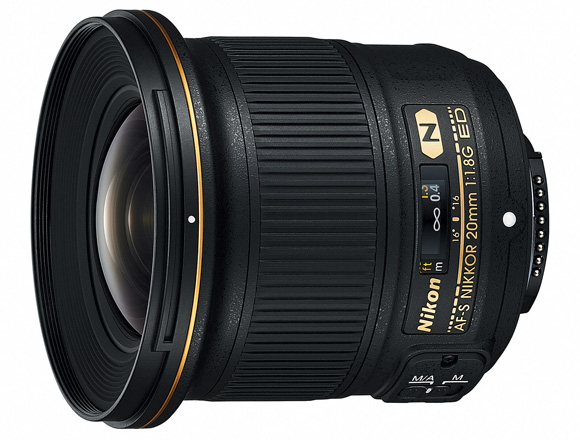



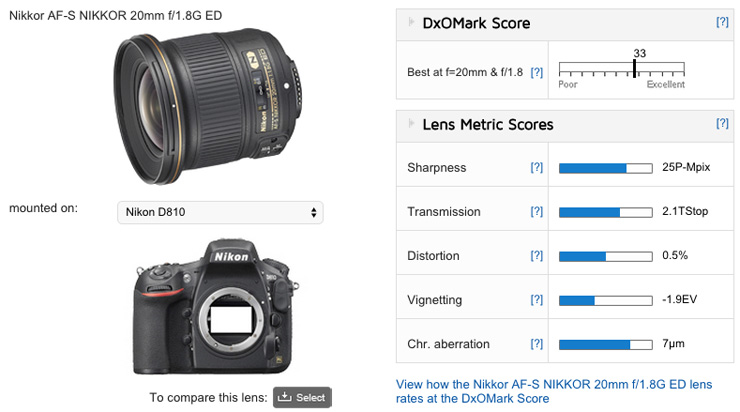
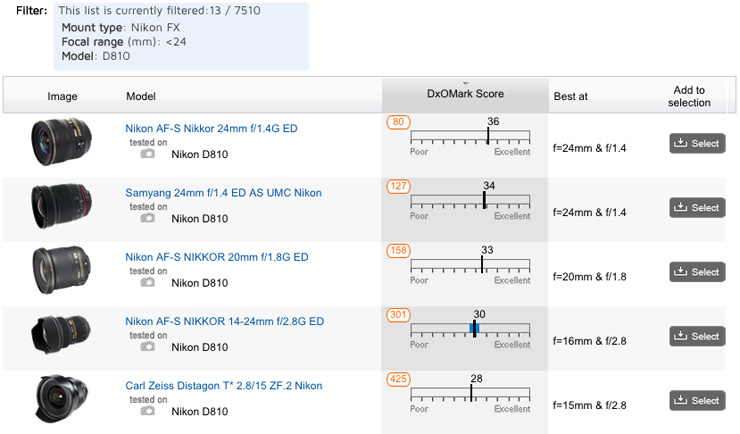
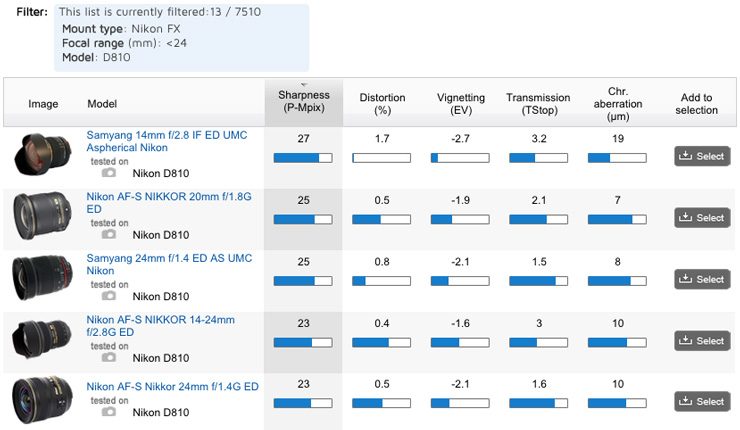
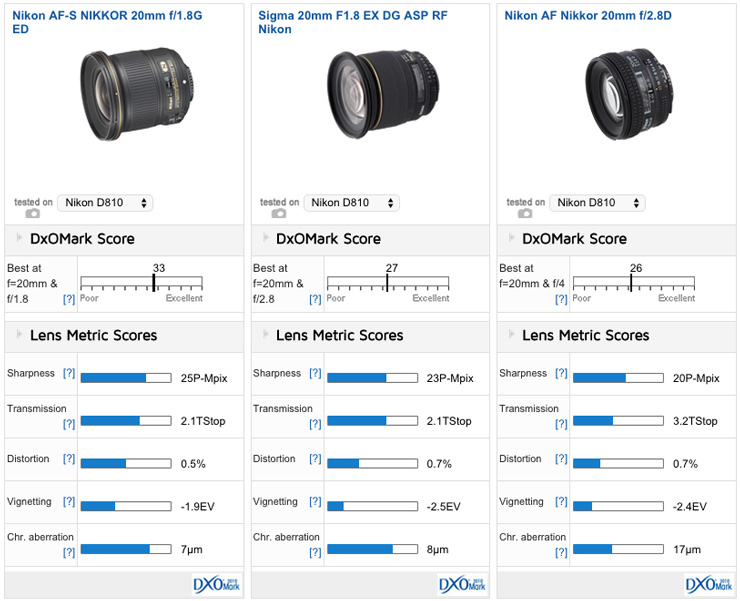
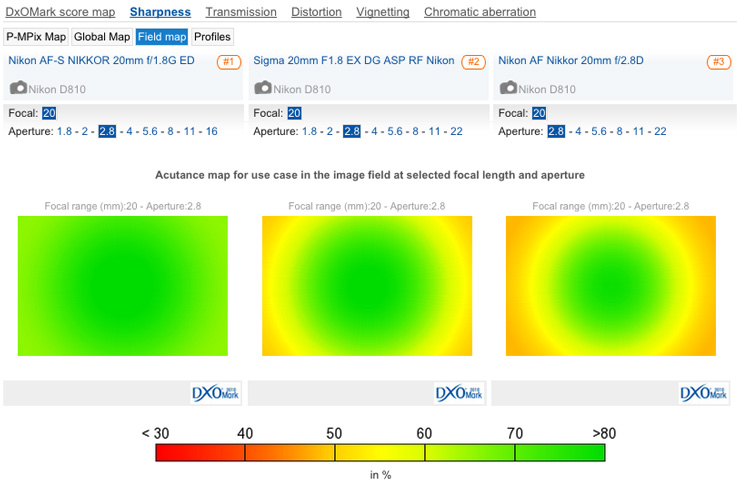
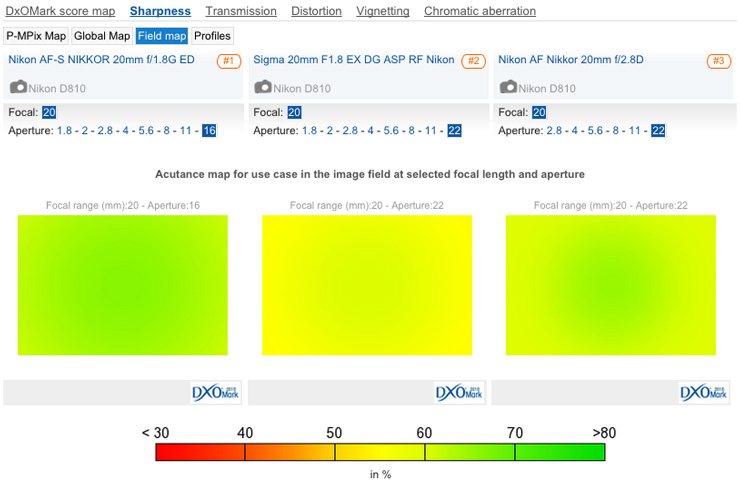
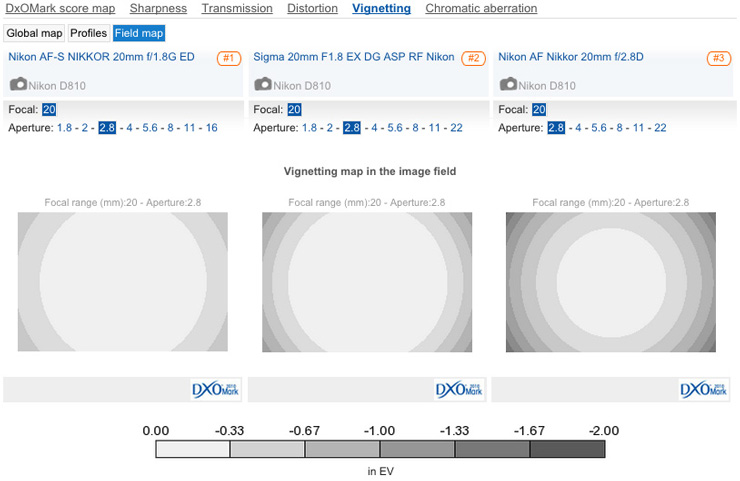
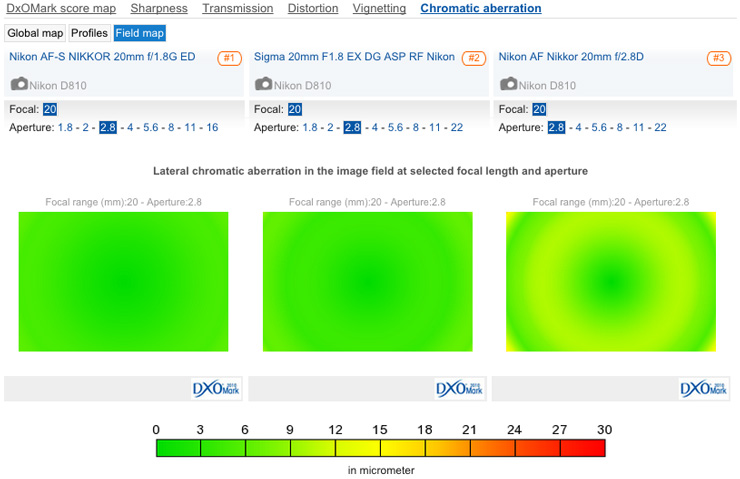
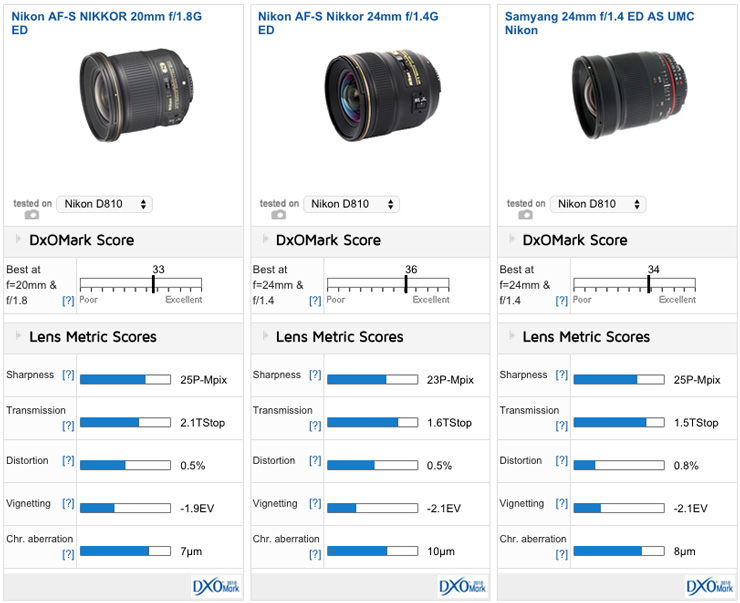
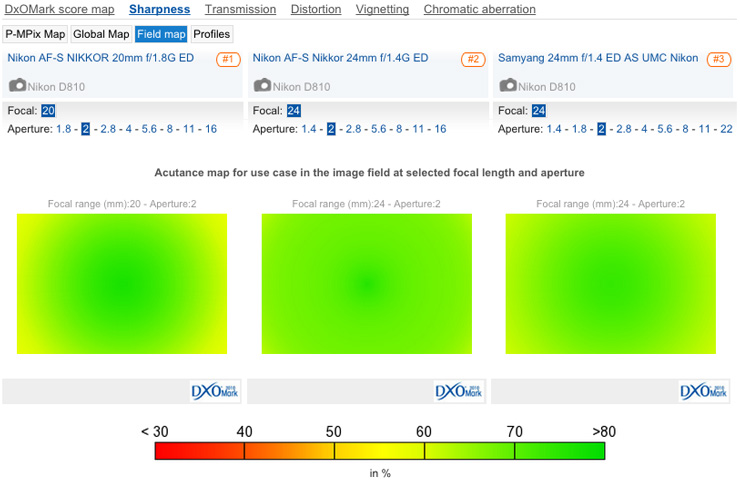
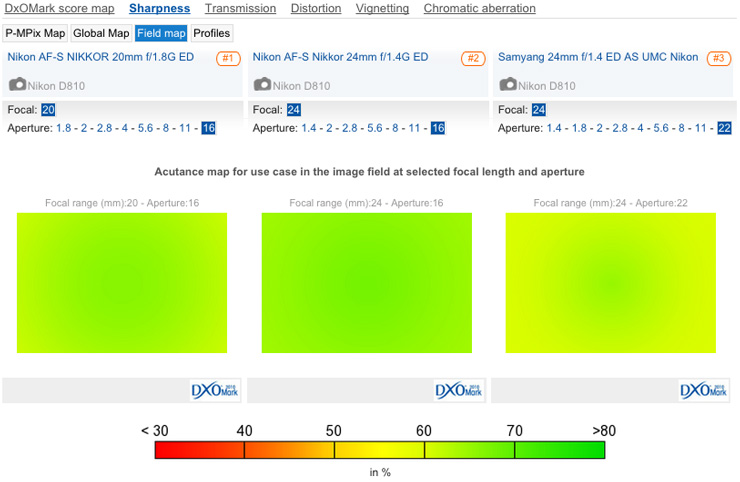
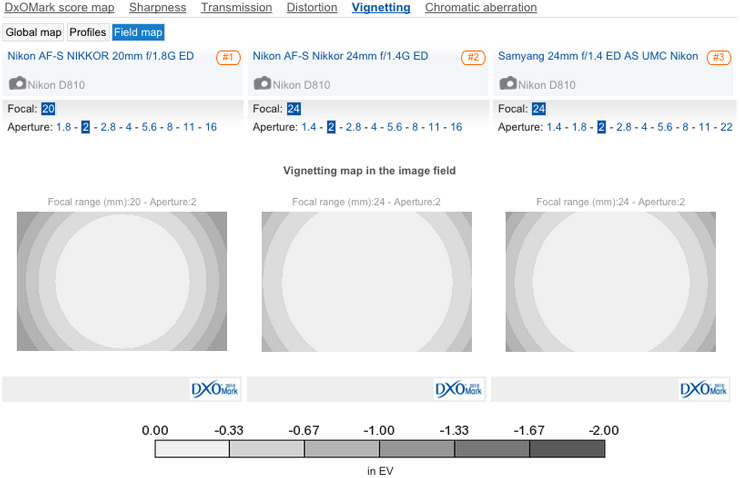
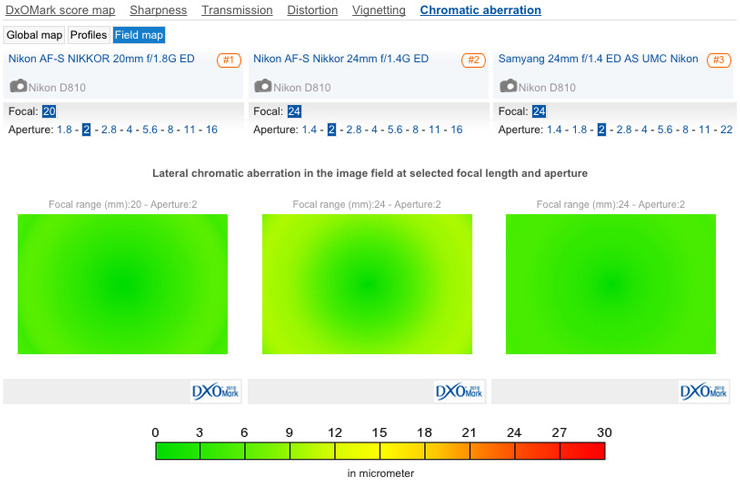
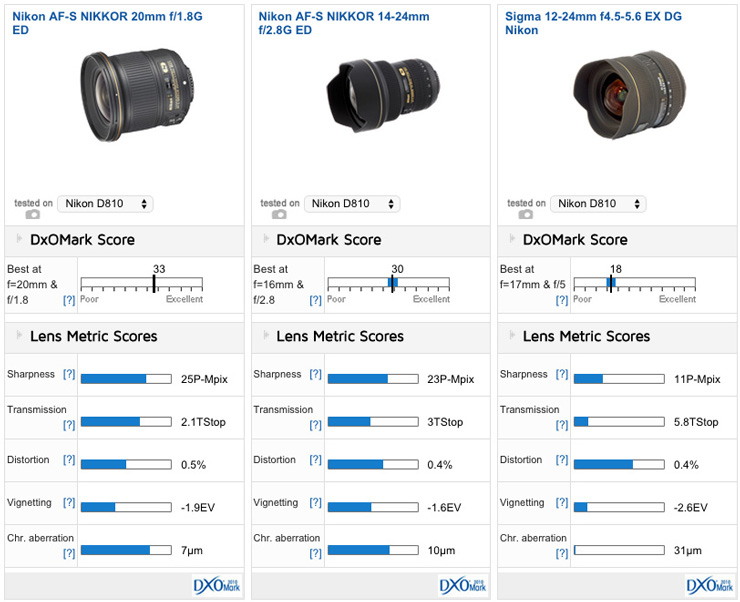
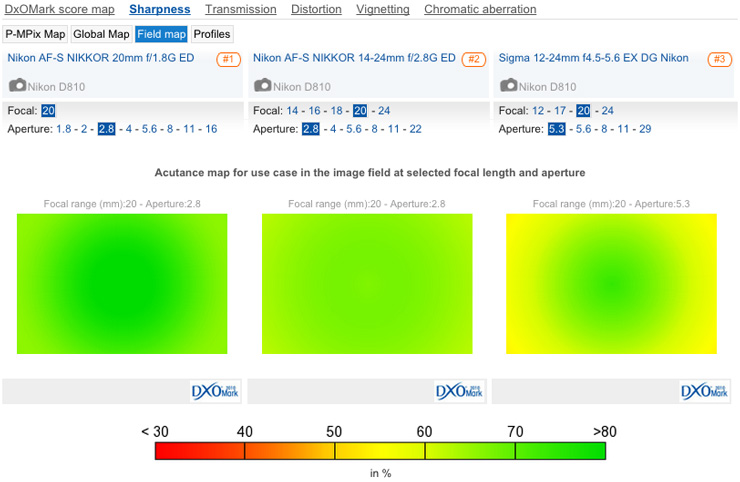
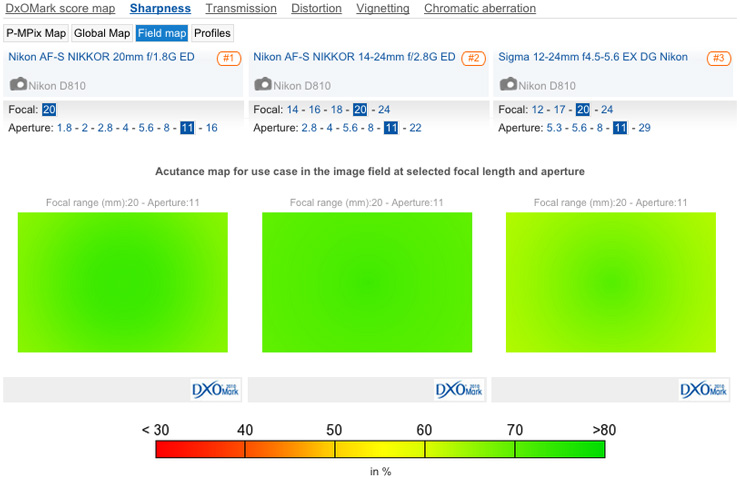
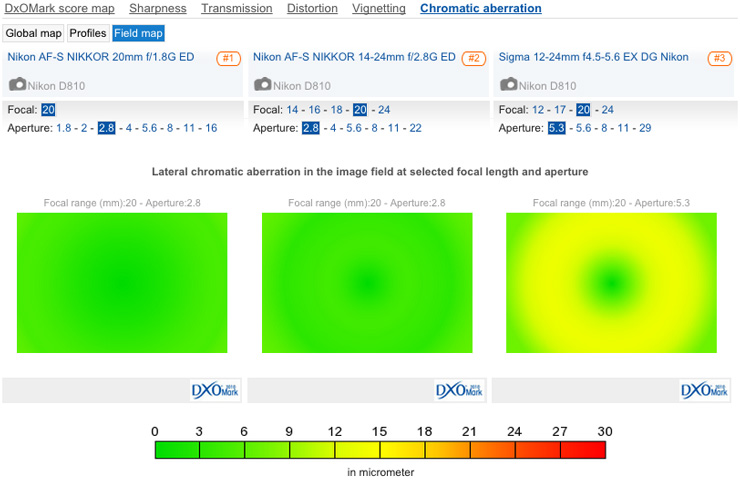
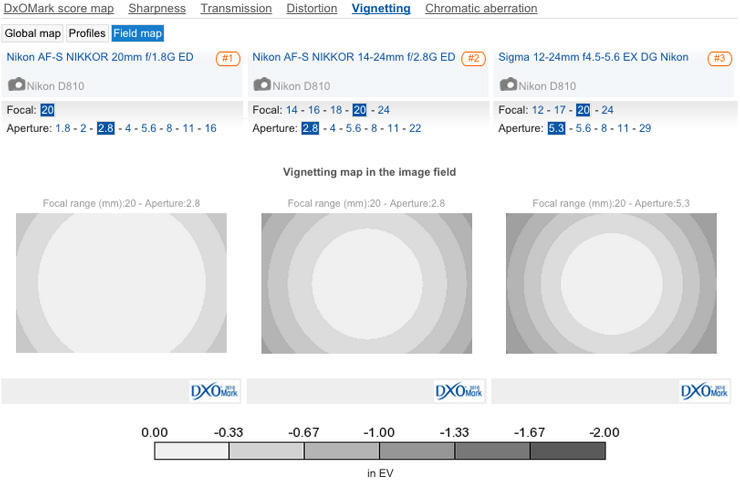
DXOMARK encourages its readers to share comments on the articles. To read or post comments, Disqus cookies are required. Change your Cookies Preferences and read more about our Comment Policy.